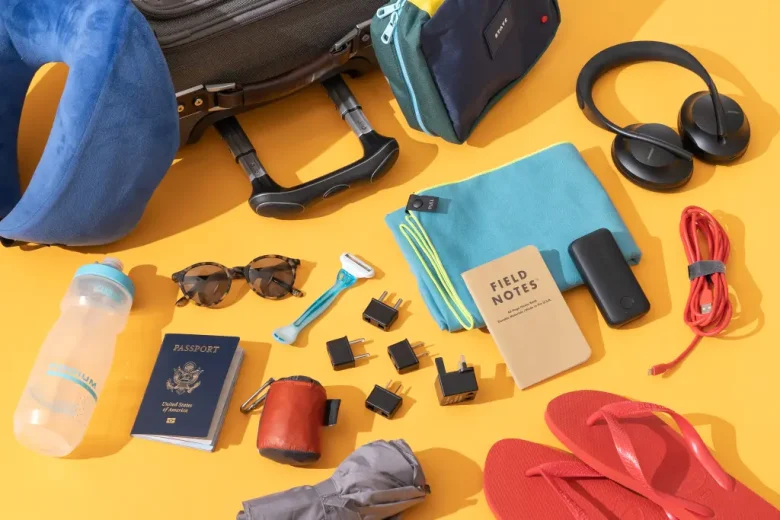Traveling is one of life’s greatest joys, offering a chance to explore new destinations, immerse yourself in diverse cultures, and create unforgettable memories. Yet for many, the dream of travel can feel out of reach due to the seemingly high costs involved. Between flights, accommodations, meals, and activities, expenses can quickly pile up, leaving many wondering how to travel without breaking the bank.
The good news? Traveling doesn’t have to drain your wallet. With a bit of smart planning, creativity, and flexibility, you can experience incredible adventures on any budget. The key is learning how to prioritize spending, seek out hidden savings opportunities, and embrace resourcefulness. Cost-conscious travel doesn’t mean missing out on the highlights of your trip. On the contrary, it allows you to focus on what truly matters—creating cherished moments—without the stress of overspending.
Imagine finding a flight deal that saves hundreds of dollars or discovering free local events that enrich your trip in ways money can’t buy. These aren’t just wishful scenarios; they’re entirely achievable with the right strategies. Whether you’re a seasoned traveler or a first-time adventurer, adopting a budget-friendly mindset can open up a world of possibilities.
In this article, we’ll uncover travel hacks to help you cut costs without cutting the fun. From securing affordable transportation and accommodations to making the most of your travel experiences without overspending, these tips are designed to make your trips both enjoyable and financially sustainable. Let’s dive into the art of smart travel and see how you can explore the world while keeping your budget intact.
1. Book Flights at the Right Time
One of the most significant expenses when traveling is airfare. To save money, timing is crucial. According to travel experts, the best time to book flights is typically 6-8 weeks before departure. Booking too early or too late can lead to higher prices. Additionally, consider flying mid-week (Tuesdays and Wednesdays) when ticket prices tend to be lower. Flexibility is key—if your travel dates are adjustable, use fare comparison websites like Google Flights or Skyscanner to track fluctuations and get the best deal.
Another trick is to book connecting flights instead of direct ones. While they may take longer, you can often save a significant amount of money. And if you’re flying internationally, search for flights to major hubs like London, New York, or Amsterdam, and then book a budget airline or train for the final leg of your journey.
2. Use Public Transportation
While taxis and ride-sharing services like Uber are convenient, they can also add up quickly, especially in large cities. Instead, opt for public transportation. Most cities offer affordable and efficient subway, bus, or tram systems that can take you anywhere you need to go. In places like Tokyo, Paris, or New York, public transit is not only cost-effective but also offers an authentic local experience.
Before traveling, research the public transportation system in your destination, and consider purchasing day passes or multi-ride tickets to save even more. In some cities, biking is also a great option. Many places offer bike rental services, and cycling can be an enjoyable and scenic way to explore while saving money.
3. Stay in Budget-Friendly Accommodations
Accommodation can be one of the largest travel expenses, but there are plenty of ways to save. Instead of booking a traditional hotel, look into alternatives like hostels, guesthouses, or vacation rentals on platforms like Airbnb. Many hostels offer private rooms for a fraction of the cost of a hotel room, and you’ll have the added benefit of meeting fellow travelers.
If you’re really looking to cut costs, consider staying with locals through Couchsurfing. This platform connects travelers with hosts who offer a free place to stay. Not only will you save money, but you’ll also have the opportunity to experience a destination like a local and gain insider tips.
4. Take Advantage of Free Attractions and Activities
Many destinations offer a wealth of free attractions and activities that allow you to enjoy the local culture without spending a dime. Museums, parks, historic sites, and festivals are often free or have discounted days. For example, many museums in major cities offer free entry on certain days of the week. Check the websites of attractions in advance to find out about any special offers.
In addition to museums, explore nature-based activities such as hiking, beachcombing, or visiting national parks. These activities are not only budget-friendly but often provide some of the most memorable experiences of your trip.
5. Eat Like a Local
Dining out at restaurants can be expensive, but you can save money by eating like a local. Street food is often an affordable and delicious option that gives you a taste of the local cuisine without breaking the bank. In cities like Bangkok, Mexico City, and Istanbul, food stalls offer flavorful dishes at a fraction of the cost of a sit-down restaurant.
If you’re staying in an Airbnb or vacation rental, take advantage of the kitchen facilities and prepare your own meals. This is especially useful for breakfast and snacks, which can be expensive if bought on the go. Visit local markets to pick up fresh ingredients and try your hand at cooking a local dish.
6. Travel During Off-Peak Times
Another way to cut costs without sacrificing fun is by traveling during off-peak seasons. Avoid peak holiday periods, such as Christmas, New Year, or summer vacation, when prices for flights, accommodation, and activities tend to skyrocket. Instead, plan your trip during shoulder seasons (just before or after peak times) when you can still enjoy good weather but pay significantly lower prices.
Not only will you save money, but you’ll also avoid the crowds, which can make for a more relaxing and enjoyable experience. Whether you’re visiting popular tourist spots or hidden gems, traveling off-peak allows you to experience destinations in a more authentic and intimate way.
7. Use Rewards Points and Travel Deals
Many credit cards offer rewards points that can be redeemed for travel-related expenses such as flights, hotels, and car rentals. If you have a travel rewards credit card, make sure you’re maximizing the benefits. Even if you don’t have one, consider signing up for a travel rewards program with airlines or hotel chains to start earning points for future trips.
Additionally, look for travel deals and discounts on websites like Groupon or Travelzoo. These platforms often offer discounted activities, meals, and accommodations, allowing you to stretch your budget further.
8. Pack Smart and Avoid Extra Fees
One of the easiest ways to cut travel costs is by packing efficiently to avoid unnecessary baggage fees. Many budget airlines charge extra for checked luggage, so pack light and use a carry-on whenever possible. If you’re planning to buy souvenirs, leave some extra space in your luggage to avoid paying for an additional bag.
Also, be mindful of the items you pack. If you’re traveling to a destination with a hot climate, pack clothing that can be worn multiple times and avoid overpacking. Check the weather forecast and make sure you have the essentials for your trip.
9. Negotiate and Barter
In some countries, especially in markets or with local services, it’s common to negotiate prices. Don’t be afraid to ask for a discount, especially if you’re purchasing multiple items or booking services for a longer period. While this approach doesn’t always work, it can save you money in certain destinations.
Bartering can be a fun and rewarding experience, and it’s also a great way to connect with locals while being mindful of your budget.
10. Plan Ahead, But Be Flexible
While planning is essential for any trip, flexibility is key to cutting costs. You might find that last-minute deals on flights or accommodations offer better savings than planned bookings. If you’re open to adjusting your travel dates or destination, you’ll have more opportunities to grab great deals.
Consider using fare comparison tools that let you explore multiple destinations based on your budget. If you’re flexible with where you go, you might discover exciting new places you hadn’t considered before.
Conclusion
Traveling on a budget isn’t just about saving money—it’s about redefining how you approach the experience of exploration. It’s about being intentional with your choices, prioritizing what matters most, and finding joy in the journey itself. The best part? Many of the most enriching travel experiences are free or low-cost. Whether it’s a scenic hike, a local festival, or a simple stroll through a vibrant market, these moments often leave the most lasting impressions.
By implementing the travel hacks outlined in this article, you can transform your adventures into cost-effective yet deeply fulfilling experiences. From researching deals to embracing alternative accommodations and tapping into local resources, you’ll discover how to stretch your budget without feeling like you’re cutting corners.
So, don’t let financial concerns hold you back from exploring the world. With a bit of creativity, planning, and an adventurous spirit, you can embark on journeys that are as affordable as they are unforgettable. After all, travel is not about how much you spend—it’s about the memories you make, the people you meet, and the stories you gather along the way. Start saving today, and let the world be your playground, one cost-effective adventure at a time.




